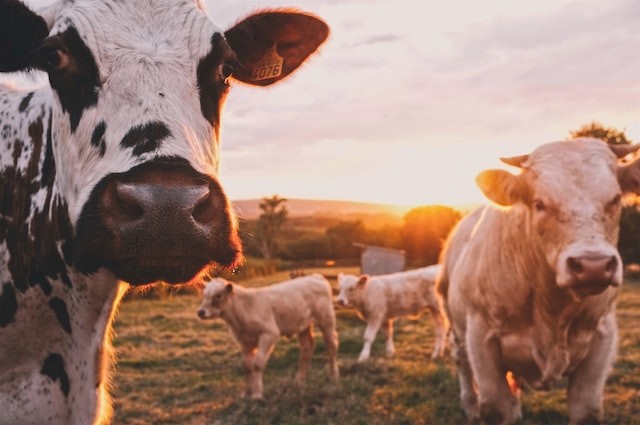The increasing levels of ammonia affected the environment and other living organisms.
There are several approaches to managing cattle to help lowering down ammonia emissions on Northern Ireland farms including extended grazing livestock, crude protein diets and genetic selection.
Livestock can be taken to lower ammonia emissions

According to Martin Kirk, a technologist at CAFRE's Greenmount Campus, one efficient way to lower ammonia emissions is to extend the grazing season for livestock, as per DAERA.
Urine's urea and feces' urease combine to form ammonia gas, a nitrogen and hydrogen-containing localized pollutant.
Animals in the wild almost seldom urinate and defecate in the same spot.
There are therefore fewer opportunities for the urease enzyme to break down the ammonia creating urea when grazing animals urinate and it doesn't combine with feces.
Ammonia emissions are reduced by 5% to 15% for every 1% decrease in dietary crude protein.
The amount of nitrogen available for ammonia production decreases due to the reduction in nitrogen excreted.
The price of the ration will go down if the amount of dietary crude protein is decreased.
Since an animal's ability to utilize protein depends on its genetic capability for efficient feed conversion, targeting dietary crude protein to match animal performance makes sense.
Through a selection of animals with enhanced genetic merit for the decrease of nitrogen excreted per kilogram of milk or meat produced; their Feed Conversion Efficiency; genetic selection can help reduce ammonia (FCE).
The pig and poultry industries have long used a genetic selection strategy called feed conversion efficiency, which has made great progress in lowering feed input while retaining productivity levels.
There are selection indices for cattle that can be used to quantify the environmental and financial benefits of feed efficiency.
Additionally, these indicators help to identify animals with increased longevity, production, and fertility.
Ammonia affects the ecology
In the environment, ammonia is a natural occurrence. Aquatic life will be affected by ammonia even at incredibly low quantities, as per Minnesota Department of Agriculture.
When lightning strikes, a small amounts of ammonia is produced, and it travels to the earth as rain.
However, microbes in water and soil produce the majority of the ammonia as a byproduct of the breakdown of plant and animal waste.
It serves as a source of nitrogen for plants and is present in relatively low, harmless concentrations in soil, air, and water.
Ammonia will undergo a variety of intricate metabolic changes in soils and water.
The nitrogen cycle, as it is popularly known, is made up of several changes.
Ammonia and water react to produce hydroxide and ammonium ions.
Unionized ammonia is a common term for ammonia.
Aquatic species are poisoned by ammonia, but not by ammonium. In water, hazardous ammonia and non-toxic ammonium are in equilibrium with one another.
Based on current or newly introduced environmental changes, the equation flip-flops.
After an ammonia discharge, the vapors will evaporate and begin to react with the moisture in the air to produce ammonium, which will eventually rain back down on the land.
The negatively charged soil organic materials and soil clays are then immediately bound by ammonium.
Ammonium rarely builds up in soil since bacteria quickly turn it into nitrates when it is not absorbed by plant roots.
Water makes up a large portion of all plants, trees, and crops.
The vapor from a significant ammonia discharge will probably burn the leaves of surrounding downwind flora.
Animals cannot breathe ammonia fumes.
A release or possible release must be made known to dairy, swine, and poultry livestock producers so they can take the necessary precautions.
© 2025 NatureWorldNews.com All rights reserved. Do not reproduce without permission.





